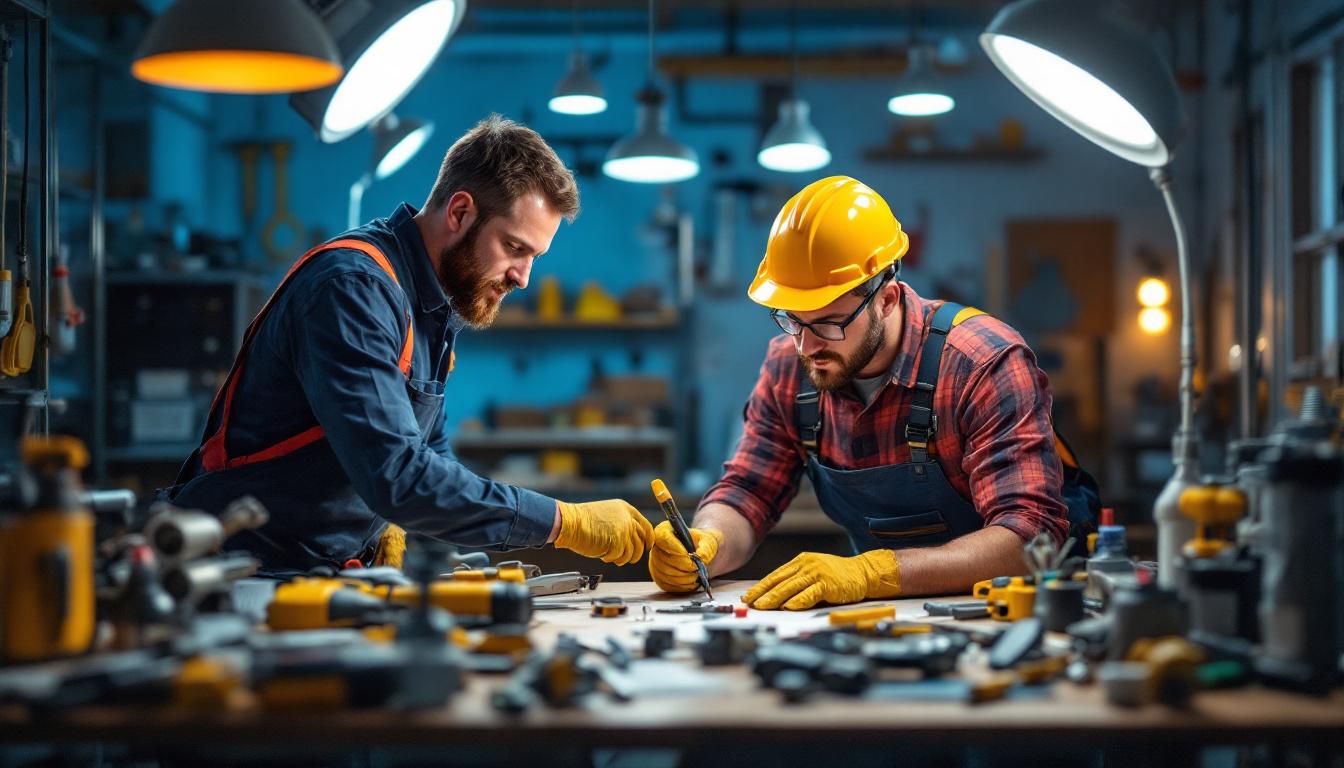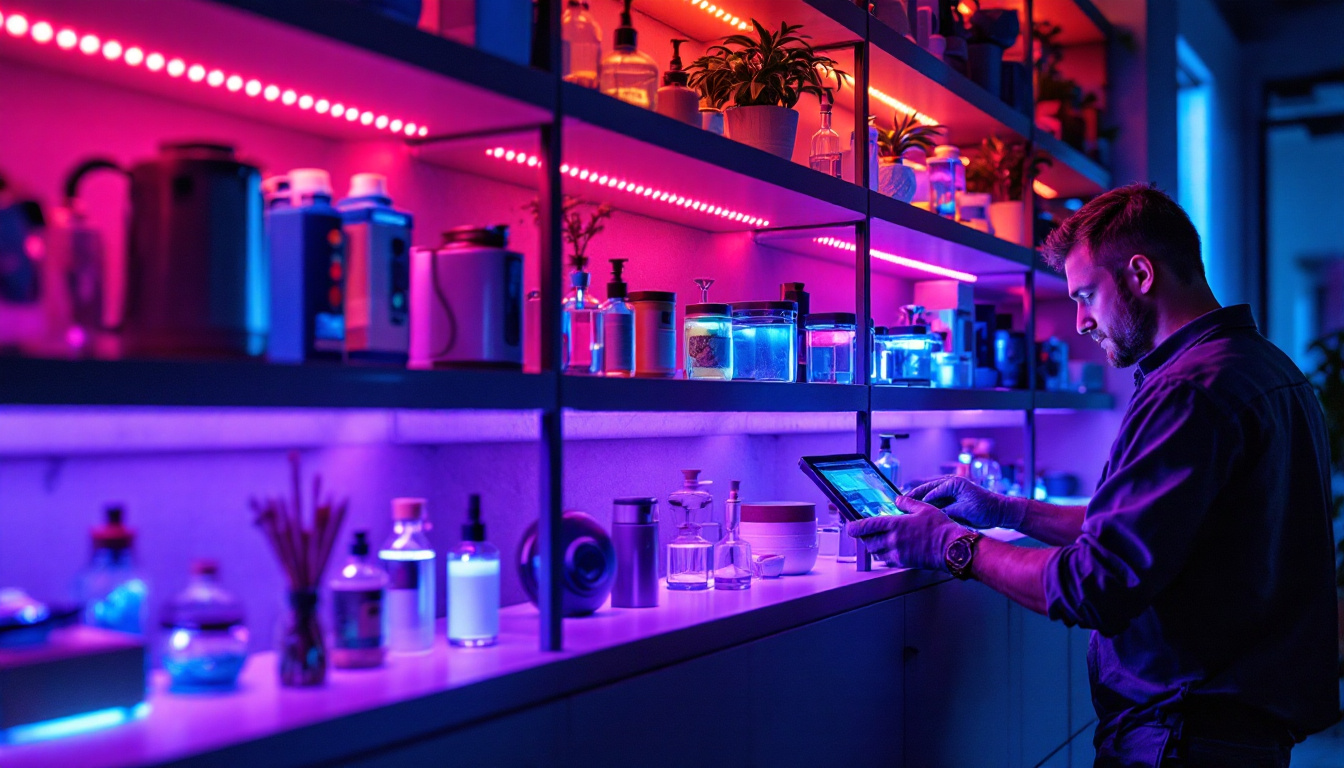
Lighting plays a crucial role in shaping the ambiance and functionality of any space. For lighting contractors, understanding the intricacies of lighting design and installation is essential. This article aims to address common questions that lighting contractors often encounter, providing insights that can enhance their knowledge and improve their services.
Lighting can be broadly categorized into three main types: ambient, task, and accent lighting. Ambient lighting serves as the primary source of illumination in a space, providing overall brightness. Task lighting, on the other hand, focuses on specific areas where activities such as reading or cooking occur. Finally, accent lighting is used to highlight particular features or objects, adding depth and interest to the overall design.
Each type of lighting serves a distinct purpose and can be combined to create a well-rounded lighting scheme. Understanding these categories helps contractors design spaces that are both functional and aesthetically pleasing. For instance, in a kitchen, ambient lighting might come from ceiling fixtures, while under-cabinet lights serve as task lighting for food preparation. Accent lighting could be used to showcase decorative elements like artwork or architectural features, creating a layered and inviting atmosphere. This thoughtful combination not only enhances the usability of the space but also contributes to the overall mood and style, making it essential for contractors to consider the interplay of these lighting types in their designs.
LED lights have revolutionized the lighting industry due to their energy efficiency and longevity. Unlike traditional incandescent bulbs, which convert a significant amount of energy into heat, LEDs convert most of their energy into light. This results in lower energy bills and reduced environmental impact.
Additionally, LEDs offer a variety of color temperatures and can be easily dimmed, providing greater flexibility in design. For contractors, understanding these differences is crucial when recommending lighting solutions to clients. Furthermore, the durability of LED lights means they have a much longer lifespan, often lasting up to 25,000 hours or more compared to the 1,000 hours typical of incandescent bulbs. This longevity reduces the frequency of replacements, which is particularly beneficial in commercial settings where maintenance costs can add up. As such, contractors can not only promote energy savings but also emphasize the reduced maintenance burden that comes with choosing LED technology, making it an attractive option for both residential and commercial projects.
Smart lighting systems have gained popularity for their convenience and energy-saving capabilities. These systems allow users to control their lighting remotely via smartphones or voice-activated devices. Features such as scheduling, dimming, and color changes can enhance the user experience significantly.
From a contractor’s perspective, installing smart lighting can add value to a project. Clients often appreciate the modern touch and increased control over their environment, making it a selling point for contractors looking to differentiate their services. Moreover, smart lighting can integrate with other home automation systems, allowing for seamless control of the entire home environment. For example, homeowners can set their lights to automatically adjust based on the time of day or their personal routines, promoting energy efficiency and enhancing security by simulating occupancy when they are away. This level of customization not only appeals to tech-savvy clients but also positions contractors as forward-thinking professionals who are in tune with the latest trends in home automation, ultimately leading to greater client satisfaction and potential referrals.
Designing an effective lighting plan involves several key factors. First, understanding the purpose of the space is critical. Different environments, such as residential, commercial, or industrial spaces, have unique lighting needs. Contractors should assess the activities that will take place in the area to determine the appropriate lighting types and levels.
Additionally, the layout and architecture of the space must be taken into account. Natural light sources, ceiling heights, and wall colors can all influence how lighting is perceived. A well-designed plan will harmonize artificial lighting with natural light, creating a balanced atmosphere.
Lighting is a powerful tool in interior design, capable of transforming a space’s mood and functionality. Properly placed lighting can highlight architectural features, create focal points, and even make a room feel larger or cozier. Contractors should work closely with interior designers to ensure that the lighting complements the overall design vision.
Moreover, the use of different lighting fixtures, such as chandeliers, wall sconces, and recessed lights, can add layers of interest. By combining various types of lighting, contractors can create dynamic environments that engage the senses.
Color temperature, measured in Kelvin (K), significantly impacts the ambiance of a space. Warmer tones (2700K-3000K) create a cozy and inviting atmosphere, making them ideal for residential settings. Cooler tones (4000K-5000K) are often used in workspaces, as they promote alertness and concentration.
Contractors must educate clients about the importance of selecting the right color temperature for their specific needs. This knowledge can help clients make informed decisions that enhance their overall satisfaction with the final result.
The lighting installation process typically involves several key steps. Initially, a thorough assessment of the site should be conducted to identify existing electrical systems and any potential challenges. Following this, a detailed lighting plan should be developed, outlining the placement of fixtures and wiring requirements.
Once the planning phase is complete, contractors can proceed with the installation. This includes mounting fixtures, connecting wiring, and ensuring that all electrical work complies with local codes and regulations. Finally, testing the system is essential to ensure everything functions correctly before the project is completed.
Safety should always be a top priority during lighting installations. Contractors must adhere to local electrical codes and regulations to minimize risks. This includes using the appropriate personal protective equipment (PPE), ensuring proper tool usage, and maintaining a clean and organized workspace.
Additionally, it is crucial to educate team members about potential hazards, such as working with live wires or heavy fixtures. Regular safety training sessions can help reinforce best practices and ensure a safe working environment.
Lighting contractors often encounter various challenges during installations. One common issue is dealing with existing electrical systems that may not meet current standards. Upgrading these systems can be time-consuming and may require additional planning and resources.
Another challenge is managing client expectations. Clients may have specific ideas about their lighting needs, and it is essential for contractors to communicate effectively to ensure that the final result aligns with their vision. Addressing these challenges proactively can lead to smoother installations and higher client satisfaction.
Regular maintenance is essential to ensure the longevity and efficiency of lighting systems. This includes cleaning fixtures to remove dust and debris, which can diminish light output. Additionally, contractors should recommend periodic checks of wiring and connections to identify any potential issues before they become significant problems.
For commercial clients, establishing a maintenance schedule can help keep lighting systems in optimal condition. This proactive approach can prevent costly repairs and ensure that the lighting continues to meet the client’s needs over time.
Lighting issues can arise for various reasons, and contractors should be prepared to troubleshoot effectively. Common problems include flickering lights, dimming, or complete outages. In many cases, these issues can be traced back to faulty wiring, burned-out bulbs, or incompatible fixtures.
Contractors should develop a systematic approach to troubleshooting. This includes checking the power supply, inspecting connections, and testing individual components to isolate the problem. By being methodical, contractors can quickly identify and resolve issues, minimizing downtime for clients.
Several signs indicate that a lighting system may require an upgrade. Frequent bulb replacements, inconsistent lighting levels, and increased energy bills are all red flags. Additionally, older systems may not provide the flexibility or efficiency that modern technologies offer.
Contractors should educate clients about the benefits of upgrading their lighting systems, such as improved energy efficiency, better control options, and enhanced aesthetics. By staying informed about the latest advancements in lighting technology, contractors can provide valuable recommendations to clients.
Effective communication is key to successful contractor-client relationships. Contractors should take the time to listen to clients’ needs and preferences, ensuring that their vision is understood. Regular updates throughout the project can help manage expectations and build trust.
Additionally, using visual aids, such as design mock-ups or samples, can help clients visualize the final result. Clear explanations of technical aspects, such as energy efficiency and maintenance requirements, can also empower clients to make informed decisions.
Lighting contractors should prioritize continuing education to stay current with industry trends and advancements. Numerous resources are available, including online courses, workshops, and industry conferences. Professional organizations often offer certifications that can enhance a contractor’s credibility and expertise.
Networking with other professionals in the field can also provide valuable insights and foster collaboration. By investing in ongoing education, contractors can improve their skills and offer clients the best possible solutions.
Building long-term relationships with clients requires consistent communication, quality workmanship, and exceptional customer service. Following up after a project is completed can demonstrate a contractor’s commitment to client satisfaction.
Additionally, offering maintenance services or check-ins can help keep the lines of communication open. Contractors who prioritize client relationships are more likely to receive referrals and repeat business, ultimately contributing to their long-term success.
Lighting contractors play a vital role in creating functional and aesthetically pleasing spaces. By understanding common questions and challenges in the industry, contractors can enhance their knowledge and improve their services. From design considerations to installation best practices and client communication, addressing these aspects can lead to greater client satisfaction and business success.
As the lighting industry continues to evolve, staying informed and adaptable will be crucial for contractors. Embracing new technologies, prioritizing safety, and fostering strong client relationships will ensure that lighting contractors remain competitive and successful in their field.
Ready to elevate your lighting projects with the best products on the market? Look no further than LumenWholesale for a vast selection of spec-grade lighting solutions at unbeatable wholesale prices. Say goodbye to local distributor markups and hello to top-quality lighting that meets the highest industry standards. With free shipping on bulk orders, LumenWholesale is your go-to source for premium lighting without hidden fees. Enhance your service offerings and delight your clients with the perfect blend of quality, affordability, and convenience. Wholesale Lighting at the Best Value is just a click away.

Discover how industrial solar lights are revolutionizing the lighting industry, offering contractors sustainable, cost-effective, and efficient solutions.

Discover the latest ceiling stairway lighting trends every lighting contractor must know.

Discover essential tips for lighting contractors to avoid common pitfalls when installing emergency LED lights.

Discover the transformative power of UV lights for shelves with expert insights from lighting contractors.